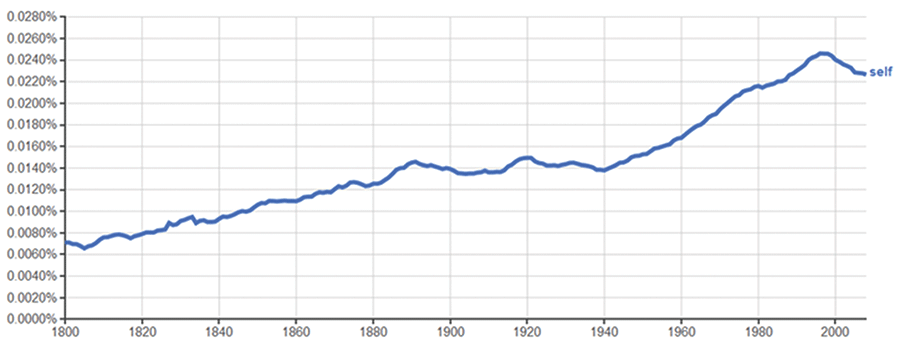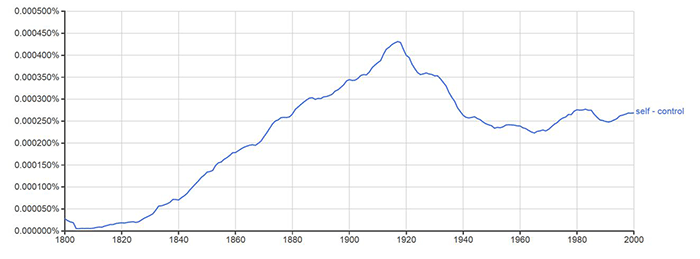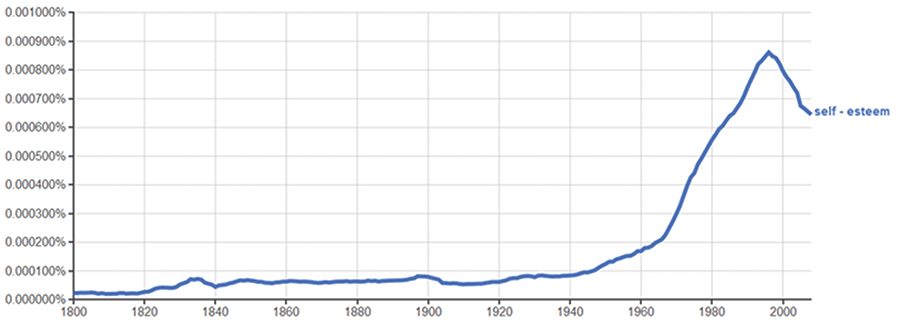Teaching Current Directions
Teaching Current Directions in Psychological Science
Aimed at integrating cutting-edge psychological science into the classroom, “Teaching Current Directions in Psychological Science” offers advice and how-to guidance about teaching a particular area of research or topic in psychological science that has been the focus of an article in the APS journal Current Directions in Psychological Science. Current Directions is a peer-reviewed bimonthly journal featuring reviews by leading experts covering all of scientific psychology and its applications, and allowing readers to stay apprised of important developments across subfields beyond their areas of expertise. Its articles are written to be accessible to nonexperts, making them ideally suited for use in the classroom.
Visit David G. Myers and C. Nathan DeWall’s new blog “Talk Psych” at www.talkpsych.com. Similar to that of the APS Observer column, the mission of their blog is to provide daily updates on psychological science.
The Neural Greenhouse: Teaching Students How to Grow Neurons and Keep Them Alive
Let’s Hear a Good Word for Self-Esteem
The Neural Greenhouse: Teaching Students How to Grow Neurons and Keep Them Alive
By C. Nathan DeWall
Our brain resembles a greenhouse. Each day, new neurons sprout, while others wither and die. Impulses slide down axons, pass through bushy dendrites, and spew neurotransmitters that help pollinate close-by neural receptors. How can we keep newly grown neurons alive?
Learning is the fertilizer that saves new neurons from an early death, according to APS Fellow Tracey Shors (2014). Take two groups of animals that have gained several thousand new neurons. Next, teach one group a new skill. Just channel your inner B. F. Skinner — after all, he taught pigeons how to play ping-pong. Have the other group of animals relax and take it easy. Which group of animals will suffer the fewest new-neuronal casualties? As long as they are novice ping-pong players, the animals that learned a new skill will keep more new neurons.
There is good news and bad news. The good news is that there is no limit to how many new neurons learning can help keep alive. The more new skills animals learn, the more new neurons they keep. But, as with anything that seems too good to be true, the bad news is that new neurons stick around only when learning requires effort. This finding makes sense: New neurons will only stay if they are needed to do something that the existing cadre of neurons struggle to do on their own.
To rescue new neurons from death, we might learn how to speak a new language, how to circumnavigate the globe in a hot air balloon, or how to make a homemade lava lamp. We cannot expect to save our new neurons by learning an easy skill. There are no shortcuts to saving a new neuron’s life.
To take this science into the classroom, instructors can try three activities. Ask students to form small groups. Using their laptops, smartphones, or other electronic devices, have students investigate how many neurons exist in the brains of humans (86 billion), nematode worms (302), and fruit flies (about 100,000). Next, ask the students to do a quick Internet search and identify some psychological characteristics that differentiate these three species. How do their capacities for thought, emotion, and complex behavior differ? Finally, have students discuss why certain species may have more neurons than others. How do the species differ in their ability to keep new neurons alive? What might happen if humans lost their ability to keep their new neurons?
The second activity, “How to Keep a Neuron Alive,” asks students to recall what they know about the importance of effortful learning in keeping new neurons alive. Effortful learning is not always enjoyable; we often prefer to relax and save our limited mental energy. In groups of two or three, ask students to identify or develop a way to make effortful learning pleasant enough to do on a regular basis. For example, students might suggest completing difficult academic activities in a beautiful environment, such as a local wilderness location. Instructors can have students present their ideas. Next, the class can vote to select their favorite idea.
If time permits, instructors can ask students to spend the next week using the winning learning strategy. Students may then write a blog post, create a reflection video and post it to YouTube, or write a reflection paper that describes how the learning strategy affected their approach to completing their coursework.
The final activity, “Growing and Maintaining Neurons,” asks students to develop an intervention that produces and keeps new brain cells. Shors cites evidence that physical exercise increases neuron production (Curlik et al., 2013; Pereira et al., 2007) but does not influence whether new neurons live or die. Effortful learning, in contrast, does not influence new neuron production but increases the likelihood that new neurons will survive. Have students create their own program that combines physical exercise with effortful learning. If your students like to vote, feel free to use the same election, rewarding, and implementation procedure used in the second activity.
Our brain is constantly in flux. Neurons grow and shrivel each day. Using effort to learn new skills can extend a new neuron’s life, which can improve future learning and memory. To be sure, there is no silver bullet to keeping new neurons alive. Some are destined to die, no matter how much we try to save them. But this research suggests that it might not be a bad idea to take that pottery class you have been putting off, to learn how to master the Twisted Scissors Crow yoga position, or to learn a new language. Your brain, especially those new neurons vying for a permanent home, will thank you.
Let’s Hear a Good Word for Self-Esteem
By David G. Myers
At the pivotal center of our universe is our sense of self — our self-awareness, our self-identity, our self-monitoring, our self-control, and our self-esteem. No surprise, then, that at the center of social–personality psychology is the exploration of “self.” Since 1970, the number of articles having to do with the “self” has soared from 1,543 articles to 28,319 in 2013, according to information retrieved from PsycINFO.
Self-esteem — a subjective sense of one’s self-worth (as distinct from narcissistic feelings of superiority and entitlement) — correlates with good things, including emotional well-being, persistence on difficult tasks, and school achievement. But is high self-esteem the horse or the cart? Does self-esteem protect us from depression and encourage a venturesome spirit? Or does it merely reflect reality — is it a result of our surmounting challenges, or perhaps a gauge that reads the quality of our relationships (Baumeister, 2006; Dawes, 1994; Leary, 1999; Seligman, 1994, 2002)?
Researchers have argued the liabilities of excessive positive self-regard — of “unrealistic optimism” (Shepperd, Klein, Waters, & Weinstein, 2013), of blindness to one’s own incompetence (Kruger & Dunning, 1999), of the perils of self-serving bias and self-importance (Myers, 1980; Twenge, 2006, 2013), and of “the dark side of self-esteem” (Bushman & Baumeister, 1998; Bushman et al., 2009). As APS William James Fellow Roy Baumeister (2001) explained, “Conceited, self-important individuals turn nasty toward those who puncture their bubbles of self-love.”
In response to the self-esteem curmudgeons (including yours truly), Ulrich Orth and Richard Robins (2013), in an earlier Current Directions in Psychological Science article, explained that low self-esteem predicts vulnerability to depression. Now, in their 2014 article — which is a model of clarity and accessibility to undergraduate readers — they ask more broadly, “Is self-esteem consequential — does it influence important life outcomes?”
Their answer from studies that followed lives through time is “yes”: “Self-esteem is predictive of a person’s success and well-being in important life domains.” Self-esteem predicts future marriage satisfaction, social network size, physical and mental health, and job success and satisfaction; and it does so even after controlling for gender, socioeconomic status, and intelligence. (Perhaps the brief “self-affirmation” interventions that have boosted the school grades of at-risk youth [Cohen & Sherman, 2014] also have boosted their self-esteem.)
One qualification: If one controls for a long enough list of factors that covary with self-esteem, including depressive tendencies, one can squeeze the blood out of the self-esteem predictor. That’s because some variables, such as depressive tendencies, mediate the causal effect of low self-esteem on, say, substance abuse. To offer a parallel example, researchers have noted a correlation, across individuals, between religious engagement and happiness and health (Myers, 2000). But would the correlation remain if one controlled for social support, self-control, meaning, hope, and other variables associated with religious engagement? Likely not, because religious engagement is a package variable. Even a hurricane loses its causal efficacy once one controls for its associated wind, rain, and storm surge.
Given the psychological significance of self-esteem, one wonders — and instructors can ask of their students:
- “Why does self-esteem predict future life success and well-being?”
- “Would you expect people’s self-esteem scores to vary strongly with how things are going (like mood), or to be stable (like intelligence) across life’s temporary ups and downs?”
- “What would you suppose: In the long run, does human self-esteem tend to rise and decline across the lifespan? If so, what might you expect to be life’s relative low and high points?”
Orth and Robins focus on the latter two questions, noting that self-esteem is stable. Its variation among people is about three-fourths attributable to an enduring trait and only one-fourth to state variation and measurement error. They report that as people mature, their self-esteem fluctuates less and less. And they show, with a simple figure, that self-esteem tends to increase from late adolescence to mid-life, and then to taper off (albeit less among individuals who maintain their health and wealth in later life).
Their article inspires a tangential exercise that could, as a side benefit, illustrate the increasing availability of big data sources. In class, visit www.books.google.com/ngrams, and search Google’s more than 5.2 million digitized English books for the proportional occurrence of various self-related words over time.

Figure 1. The proportional occurrence of the word self in a corpus of books published in English between 1800 and the present. Source: Google Books Ngram Viewer, books.google.com/ngrams

Figure 2. The proportional occurrence of the word self-control in a corpus of books published between 1800 and the present. Source: Google Books Ngram Viewer, books.google.com/ngrams

Figure 3. The proportional occurrence of the word self-esteem in a corpus of books published between 1800 and the present. Source: Source: Google Books Ngram Viewer, books.google.com/ngrams
References
Baumeister, R. F. (2001, April). Violent pride: Do people turn violent because of self-hate, or self-love? Scientific American, 284(4), 96–101.
Baumeister, R. F. (2006, August/September). Violent Pride.Scientific American Mind, 54–59.
Bushman, B. J., & Baumeister, R. F. (1998). Threatened egotism, narcissism, self-esteem, and direct and displaced aggression: Does self-love or self-hate lead to violence? Journal of Personality and Social Psychology, 75, 219–229.
Bushman, B. J., Baumeister, R. F., Thomaes, S., Ryu, E., Begeer, S., & West, S. G. (2009). Looking again, and harder, for a link between low self-esteem and aggression. Journal of Personality, 77, 427–446.
Dawes, R. M. (1994). House of cards: Psychology and psychotherapy built on myth. New York, NY: Free Press.
Cohen, G. L., & Sherman, D. K. (2014). The psychology of change: Self-affirmation and social psychological intervention. Annual Review of Psychology, 65, 333–371.
Curlik, D. M., Maeng, L. Y., Agarwal, P. R., & Shors, T. J. (2013). Physical skill training increases the number of surviving new cells in the adult hippocampus. PLoS One, 8, e55850.
Kruger, J., & Dunning, D. (1999). Unskilled and unaware of it: How difficulties in recognizing one’s own incompetence lead to inflated self-assessments. Journal of Personality and Social Psychology, 77, 1121–1134.
Leary, M. R. (1999). The social and psychological importance of self-esteem. In R. M. Kowalski & M. R. Leary (Eds.), The social psychology of emotional and behavioral problems. Washington, DC: APA Books.
Myers, D. G. (1980). The inflated self: Human illusions and the Biblical call to hope. New York, NY: Seabury, 1980.
Myers, D. G. (2000). The funds, friends, and faith of happy people. American Psychologist, 55, 56–67.
Orth, U., & Robins, R. W. (2013). Understanding the link between low self-esteem and depression. Current Directions in Psychological Science, 22, 455–460.
Pereira, A. C., Huddleston, D. E., Brickman, A. M., Sosunov, A. A., Hen, R. … Small, S. A. (2007). An in vivo correlate of exercise-induced neurogenesis in the adult dentate gyrus. Proceedings of the National Academy of Sciences, 104, 5638–5643.
Seligman, M. E. P. (1994). What you can change and what you can’t. New York, NY: Knopf.
Seligman, M. E. P. (2002). Authentic happiness: Using the new positive psychology to realize your potential for lasting fulfillment. New York, NY: Free Press.
Shepperd, J. A., Klein, W. M. P., Waters, E. A., & Weinstein, N. D. (2013). Taking stock of unrealistic optimism. Perspectives on Psychological Science, 8, 395–411.
Twenge, J. M. (2006). Generation me. New York, NY: Free Press.
Twenge, J. M. (2013). The evidence for Generation Me and against Generation We. Emerging Adulthood, 1, 11–16.
Weinstein, N. D. (1980). Unrealistic optimism about future life events. Journal of Personality and Social Psychology, 39, 806–820.
Weinstein, N. D. (1982). Unrealistic optimism about susceptibility to health problems. Journal of Behavioral Medicine, 5, 441–460.





APS regularly opens certain online articles for discussion on our website. Effective February 2021, you must be a logged-in APS member to post comments. By posting a comment, you agree to our Community Guidelines and the display of your profile information, including your name and affiliation. Any opinions, findings, conclusions, or recommendations present in article comments are those of the writers and do not necessarily reflect the views of APS or the article’s author. For more information, please see our Community Guidelines.
Please login with your APS account to comment.